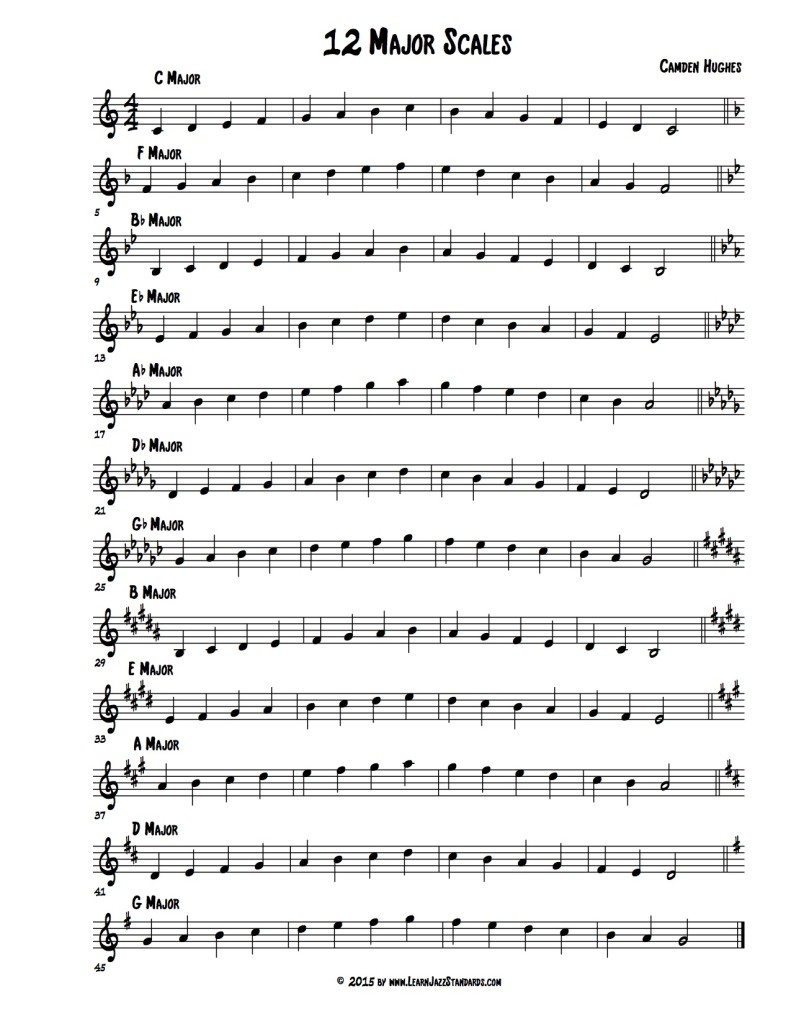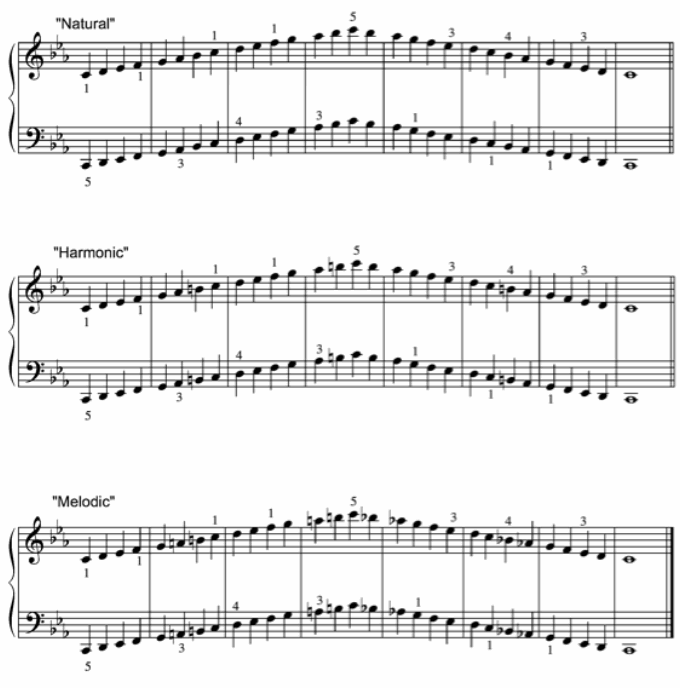

Re-write the notes of the scale by starting with the 6th scale degree (C) and ending with the 5th (also C).E-flat) by using the interval pattern W-W-H-W-W-W-H. Write out the notes of this major scale (e.g."C" if you're looking the notes for c minor.) Write down the tonic of the minor scale that you would like to write.We can use this information to find the notes of a minor scale by first finding its relative major. Each scale includes the notes, diatonic triads within in the key, and the relative major. What is the relationship between these relatives? Notice that the tonic of a natural minor scale will always be a minor 3rd below the tonic of its relative major. Heres a list of all minor scales in order of fifths. E-flat major is the relative major of c minor.c minor is the relative minor of E-flat major.We call these two scales "relatives" of each other: Since both C minor and E-flat major share the same key signature, they both use the same notes. It consists of 3 flats, and you'll notice that it is also the key signature for E-flat major. Take a look at the key signature for the c minor scale above. Describe this new pitch by using the letter name that is a third above the original note, using accidentals as necessary (e.g.Find the original note, and raise the pitch by three half steps. Using the musical alphabet, write down the letter name that is a third above the original note, counting the original as "1".Start with the given note on the piano keyboard, and write down the note name (e.g.
MINOR SCALE HOW TO
To help us find the notes of the minor scale, we'll also need to know how to find a minor 3rd. Recall that we have already talked about the minor 2nd (one half step) and the major 2nd (two half steps). 3.2 The Minor 3rdīefore we look at scales, let's add one more interval to our discussion.

We will refer to this scale with either of these names. The above minor scale is the most frequently used form of the minor scale from the Common Practice period, and is also known as the aeolian mode or the natural minor scale.

Here's the C major scale: (Press the "play" button on the upper-left hand corner to hear what it sounds like.) There are several different types of minor scales, but all of them include a special characteristic: the third note of the scale, when compared to the major scale, sounds a bit lower. Remember how we derived the major scale? It consisted of two identical tetrachords (W-W-H) connected together by an additional Whole step.Īnother scale with which you are likely very familiar is the minor scale.


 0 kommentar(er)
0 kommentar(er)
